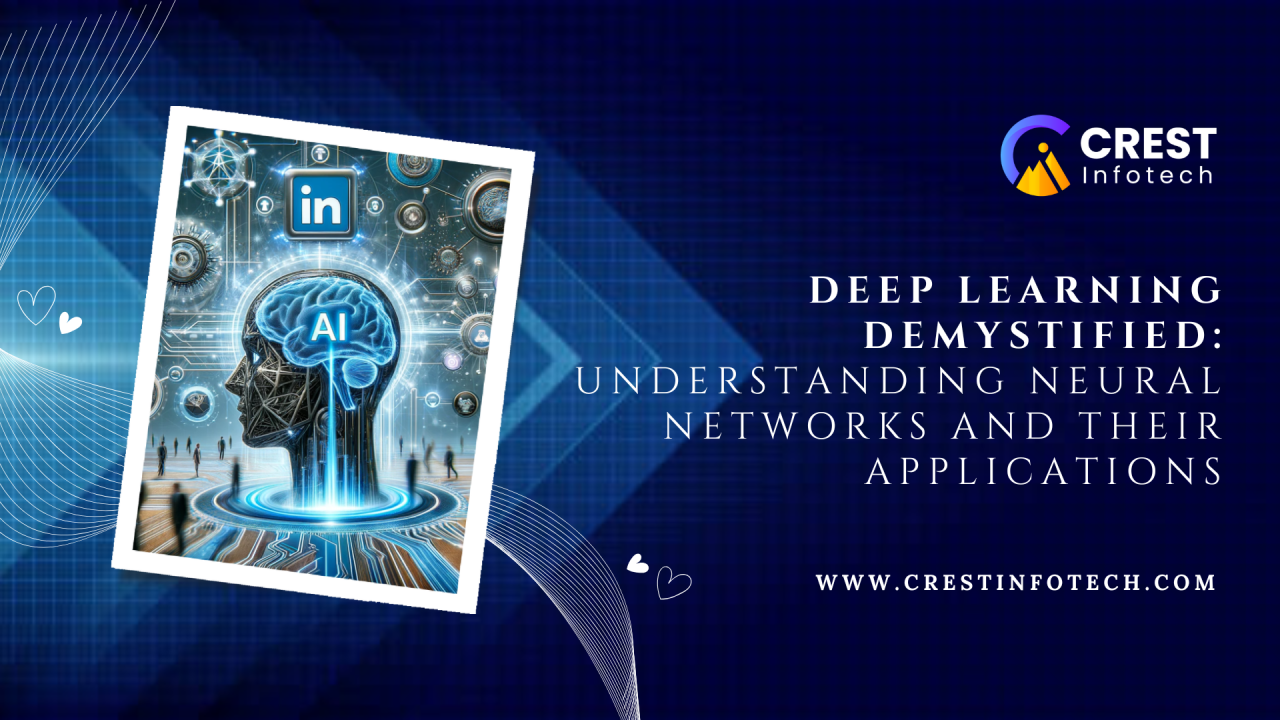Deep learning, a subset of machine learning, has revolutionized fields such as image recognition, natural language processing, and autonomous driving. At its core, deep learning is about training models to learn complex patterns in data through artificial neural networks. These models are inspired by the structure and functioning of the human brain, allowing machines to make decisions and predictions with impressive accuracy. In this article, we will demystify deep learning, explore the fundamentals of neural networks, and highlight some of their most impactful applications.
What is Deep Learning?
Deep learning is a type of machine learning that uses neural networks with many layers (hence the term “deep”) to model complex patterns in large datasets. Unlike traditional machine learning algorithms, which often require manual feature engineering, deep learning models automatically learn representations of data through multiple layers of processing. This ability to learn from data without explicit programming makes deep learning especially powerful for tasks involving unstructured data like images, audio, and text.
How Neural Networks Work: The Basics
A neural network is a computational model inspired by the human brain’s network of neurons. It consists of layers of interconnected nodes, also called neurons, where each connection between nodes has a weight that adjusts during training.
Key Components of Neural Networks:
- Neurons (Nodes): Each neuron processes input data, applies a mathematical function, and passes the result to the next layer of neurons.
- Layers: A typical neural network has three types of layers:Input Layer: Takes in the raw data.Hidden Layers: Intermediate layers where the network learns to transform the input data into meaningful representations. A deep network has multiple hidden layers, allowing it to learn more abstract features.Output Layer: Produces the final prediction or classification result.
- Weights and Biases: Each connection between neurons has a weight that determines the strength of the signal passed between them. The model also has biases that adjust the output of neurons to better fit the data.
- Activation Function: After a neuron processes the input, an activation function determines whether the signal should pass through to the next layer. Common activation functions include ReLU (Rectified Linear Unit), sigmoid, and tanh.
- Loss Function: The loss function measures the difference between the model’s prediction and the actual result, guiding the training process to minimize this error.
- Optimizer: The optimizer adjusts the weights and biases in the network using techniques like gradient descent to minimize the loss function.
Training a Neural Network
Training a neural network involves feeding data through the network, calculating the error (or loss), and using optimization algorithms (such as gradient descent) to adjust the weights to reduce that error. This process is repeated iteratively across many epochs (passes through the dataset) until the model converges to a solution.
Types of Neural Networks
Neural networks come in various architectures, each suited for different types of tasks. Here are a few common types:
- Feedforward Neural Networks (FNN):The simplest type of neural network, where information flows in one direction from input to output. FNNs are commonly used for tasks like regression and classification.
- Convolutional Neural Networks (CNN):CNNs are specifically designed for image-related tasks. They use convolutional layers that apply filters to the input data, allowing the model to learn spatial hierarchies and detect patterns like edges, textures, and objects. CNNs are widely used in image recognition, object detection, and video analysis.
- Recurrent Neural Networks (RNN):RNNs are designed for sequential data, where the output depends not just on the current input but also on previous inputs (e.g., time series or language). RNNs are used in applications like speech recognition, language modeling, and machine translation.
- Long Short-Term Memory Networks (LSTM):LSTMs are a special kind of RNN that helps the model remember long-term dependencies in sequences, addressing the problem of vanishing gradients in traditional RNNs. They are often used for tasks that require understanding context over time, such as language translation or sentiment analysis.
- Generative Adversarial Networks (GANs):GANs consist of two networks: a generator that creates new data and a discriminator that evaluates it. They are often used to generate realistic images, videos, and even music by training the generator to fool the discriminator. GANs have gained popularity in creative applications like art and deepfakes.
This article provides an introduction to deep learning, explaining the workings of neural networks and their real-world applications, such as in image recognition and natural language processing. It offers a simplified overview of how deep learning models are trained to learn from vast amounts of data, making them powerful tools for solving complex tasks.
For more details, visit the Crest Infotech blog.

Cyber Security Consultant at CVEHunter
2 个月Protecting your website, servers, and cloud is easy with CVEHunter. From automated scans to actionable reports, we secure your digital assets while you focus on what matters most. Learn more at cvehunter.com